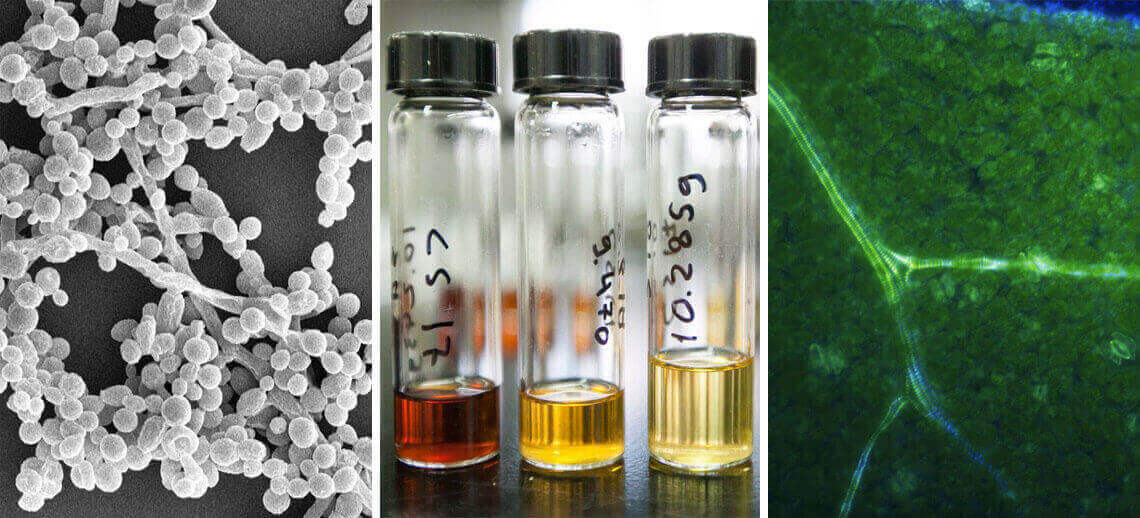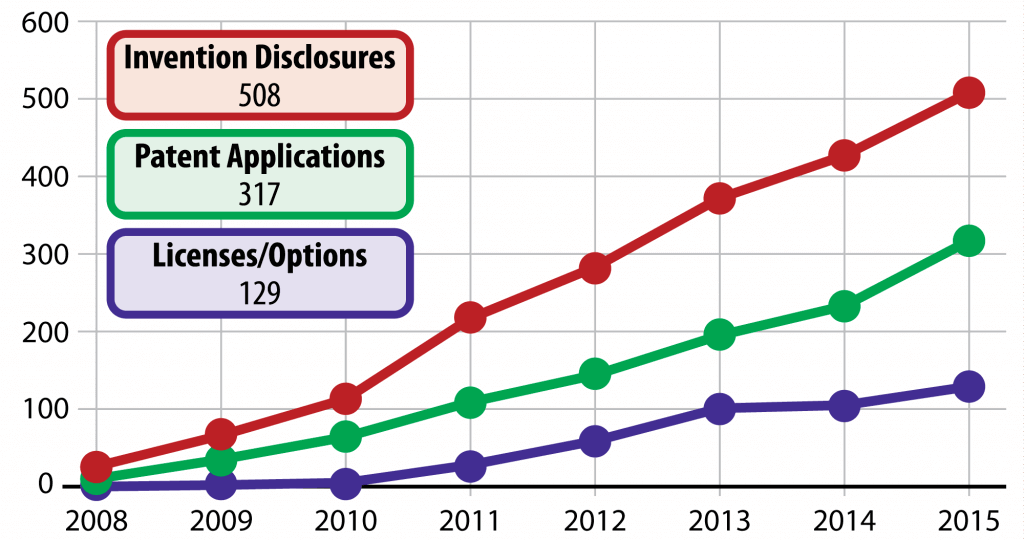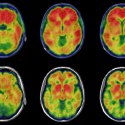Bioenergy Center, collaborators report 500th invention

GLBRC technologies include (left to right): yeast strains, screened via a novel method, that thrive in an accelerated process for converting plant biomass to ethanol; GVL, a plant-derived chemical used in creating a concentrated stream of sugars ripe with applications for biofuels; and a close-up of poplar tree lignin that’s been genetically modified for easier degradation.
The Great Lakes Bioenergy Research Center (GLBRC) and two other U.S. Department of Energy-funded Bioenergy Research Centers (BRCs) recently reported their 500th invention, making significant progress on a shared mission to develop technologies that will bring advanced biofuels to the marketplace.
In collaboration with the BioEnergy Science Center at Oak Ridge National Laboratory and the Joint BioEnergy Institute at Lawrence Berkeley National Laboratory, GLBRC seeks to address the most significant challenges standing in the way of affordable, sustainable and scalable advanced liquid transportation fuels.
Led by the University of Wisconsin–Madison and major partner Michigan State University, the center consists of more than 400 scientists, students and staff working to develop a robust and sustainable pipeline for producing biofuels and chemicals from the nonedible, or cellulosic, portion of plants. Each year the center brings in about $25 million in federal funding.
Center Director Tim Donohue credits the success of GLBRC and its partners to their multidisciplinary research models, which bring together a diverse group of experts, including ecologists, economists, engineers, plant biologists, microbiologists, computational scientists and chemists.
“What we’re seeing,” Donohue says, “is that the collaboration at the heart of the BRC research model really does increase the rate at which we conduct transformative research and develop new technologies. We would not have reached this milestone without the integration of our efforts and our expertise.”
Enabled by a broad range of genome-driven research methods, BRC technologies represent a variety of approaches to different bottlenecks in the current biofuel pipeline. Some technologies focus on improved ways of breaking down biomass for conversion into fuel, some on engineering plants with the characteristics most advantageous for biofuels, and still others on creating co-products that can help make advanced biofuels economically viable.
Since 2011, GLBRC in particular has reported 50 percent more inventions than expected for a university entity of its size and funding level. Its research has also spurred startup companies and supports a range of industries: energy, automotive, and biochemical among them.
Jay Keasling, chief executive officer of the Joint BioEnergy Institute, praised the pioneering efforts of the BRCs and their role in envisioning a future in which cellulosic biofuels provide transformative advantages for our nation.
“These inventions will be the new startups, the new fuels that will be in our tanks, the renewable materials in our lives, and the manufacturing jobs in America,” Keasling says.
Several technology transfer organizations support GLBRC’s intellectual property efforts and enable the licensing of its technologies, including the Wisconsin Alumni Research Foundation (WARF), Michigan State University Technologies and Texas A&M’s Office of Technology Commercialization.
“The GLBRC is an exceptional partner to WARF and we applaud them on this exciting milestone,” says Leigh Cagan, chief technology commercialization officer for WARF. “We’re proud to support the interdisciplinary work of our UW–Madison researchers and partners who are advancing discoveries and technologies to meet the greatest energy challenge of our time.”
Subscribe to Wisconsin Ideas
Want more stories of the Wisconsin Idea in action? Sign-up for our monthly e-newsletter highlighting how Badgers are taking their education and research beyond the boundaries of the classroom to improve lives.




